What are those bugs in your milkweed garden? Are milkweed bugs ‘good’ or ‘bad’ bugs? Why are they only on milkweed? If you found long red and black bugs, then you probably found one of two types of milkweed bugs.
There are two types of milkweed bugs: Large Milkweed Bug (LMB for short) and Small Milkweed Bug (SMB for short). Both feed on the seeds of the Milkweed plants. They are true bugs (Hemiptera order) and seed bugs (Lygaeidae family). Here’s how to tell them apart.
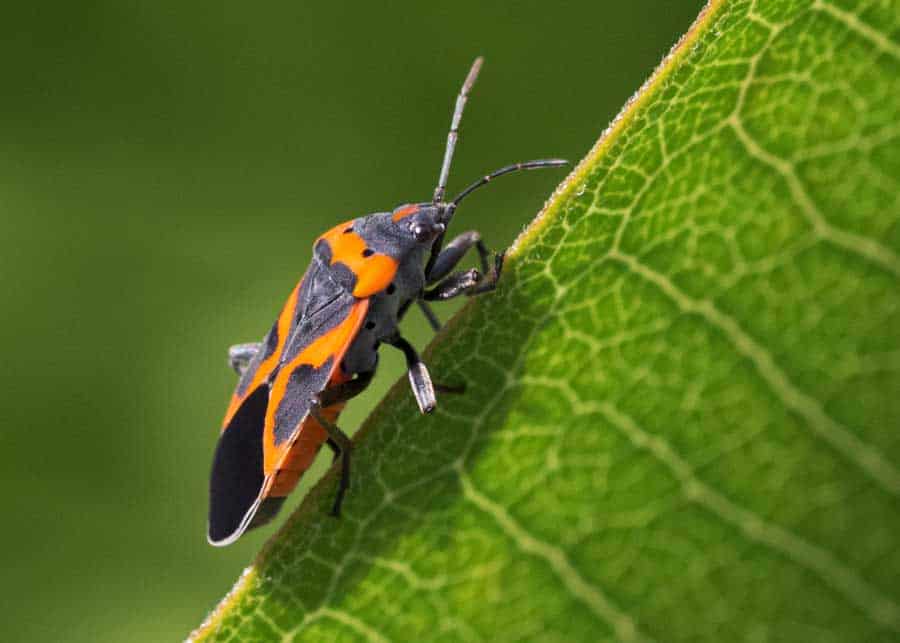
Table of Contents
5 Ways to Tell Milkweed Bugs Apart
Milkweed bugs look quite similar at first. Here’s how to tell apart the two species of milkweed bugs.
- Size: Both species of milkweed bugs are the same length – about 0.5 inches (12 mm).
- Pattern: The large milkweed bug has a large red X-pattern on its wings. The small milkweed bug has a similar red X, but it also has a large black heart design.
- Diet: The large milkweed bug eats from a more diverse selection of plants. The small milkweed bug eats milkweed seeds, flower nectar, and other insects.
- Range: Both milkweed bugs are found in North America and Central America. Only small milkweed bugs are found in Europe.
- Migration: Small milkweed bugs don’t migrate. And only northern populations of large milkweed bugs will migrate.
2 Types of Milkweed Bugs
1. Large Milkweed Bug (Oncopeltus fasciatus)
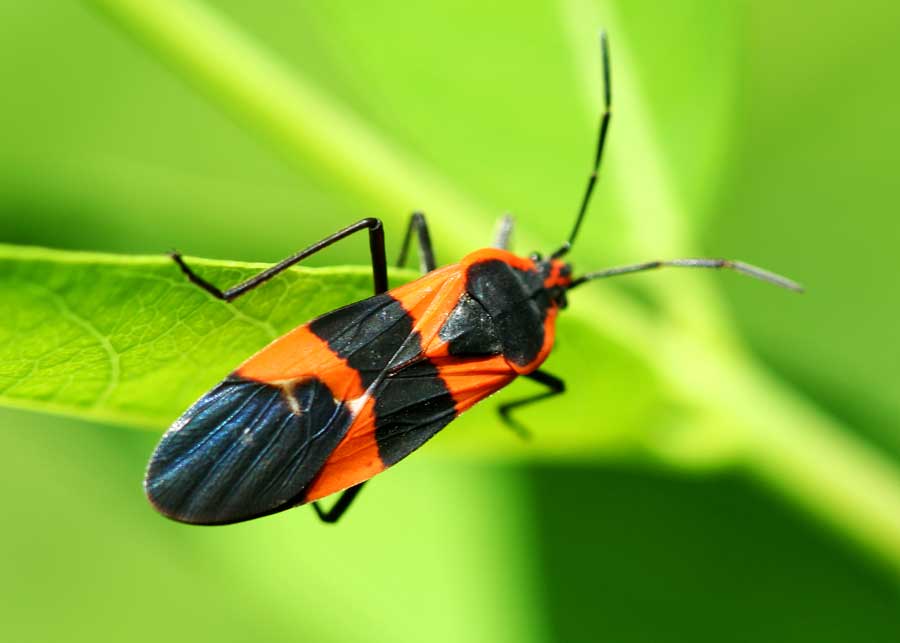
- Scientific Classification: Oncopeltus fasciatus
- Size: 11 to 12 mm in length
- Appearance: Adults are red/orange and black, with a clearly defined X-pattern on their wings.
- Males vs females: To determine the sex of a large milkweed bug, you can check the ventral side (belly) of the fourth abdominal segment. Males have a black band and females have two black spots.
- Also Known As: Large milkweed bug
- Range: From Southern Canada to Costa Rica. They can be found throughout the United States, Mexico, Central America, and the Caribbean.
- Diet: They primarily feed on the seeds of common milkweed and Caribbean milkweed. They also feed on white twinevine, Calotropis procera (Apple of Sodom, rubber bush, king’s crown), and Nerium oleander. All these plants are of the toxic dogbane family.
- Migration: Populations of large milkweed bugs that live in northern climates are known to migrate long distances, often to coincide with flowering of milkweed plants in the new location. Milkweed bugs that live in temperate climates (like Puerto Rico and other Caribbean locations) often are sedentary or will sometimes migrate short distances.
2. Small Milkweed Bug (Lygaeus kalmii)
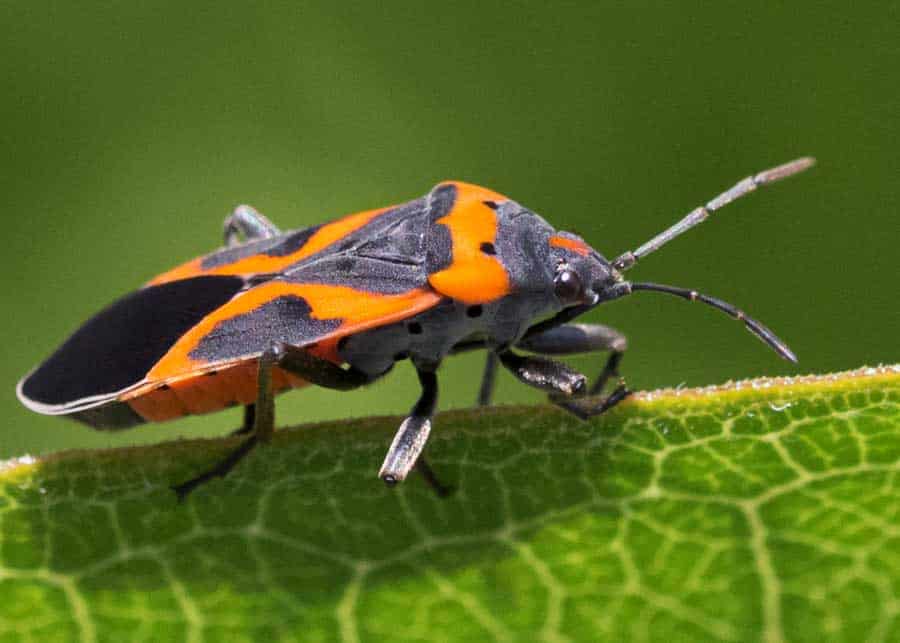
- Scientific Classification: Lygaeus kalmii
- Size: 10 to 12 mm in length
- Appearance: Adults are red/orange and gray/black, with a clearly defined black heart inside of a red X-pattern on their wings. The X-pattern doesn’t meet in the middle.
- Also Known As: common milkweed bug, small milkweed bug, or vaca Domnului
- Range: North America, Central America, and Europe
- Diet: Milkweed seeds and flower nectar. They have been known to be predatory to other insects when these food sources are limited.
- Migration: Common milkweed bugs are not migratory. Instead, they overwinter and begin reproduction in the spring, usually April.
Milkweed Bug Lifecycle
The milkweed bugs life-cycle is an interesting one. Like the ladybug, they do not go through complete metamorphosis when developing from egg to adult.
The ‘babies’ or nymphs look like the adults but don’t have wings or reproductive organs. They also lack the black spots initially (the spots show up later as the nymphs get older).
Females oviposit (lay eggs) in small areas/crevices between the pods on the milkweed plant. She will oviposit about 30 eggs a day for her one month lifespan.
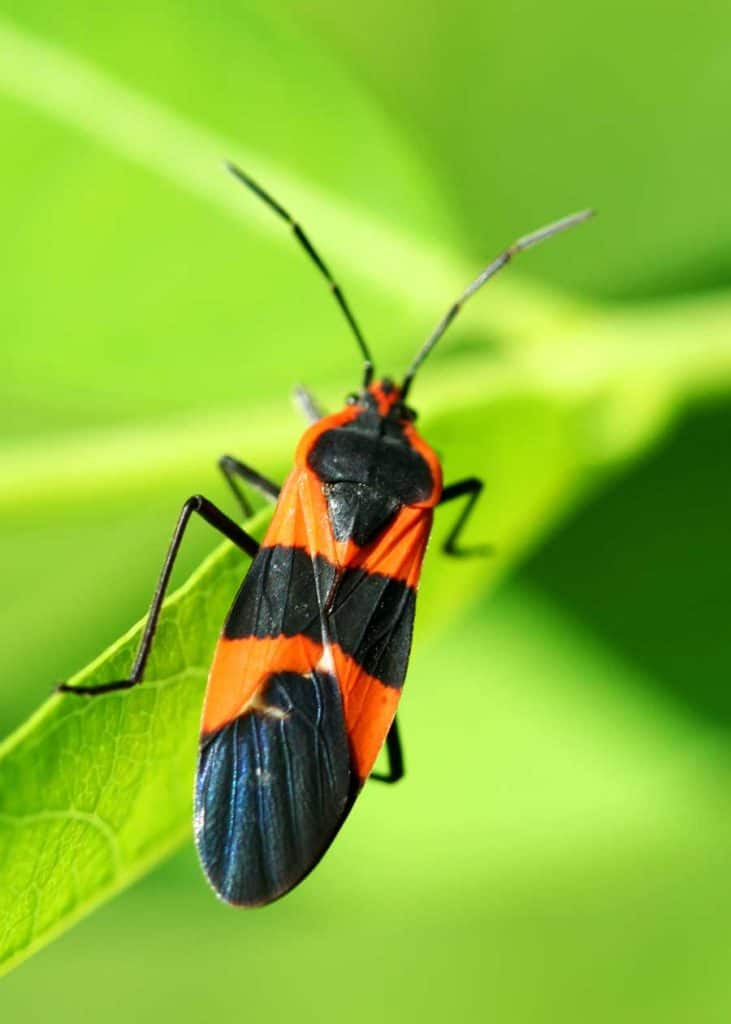
What do Milkweed Bug Eggs Look Like?
Milkweed bug eggs are oblong. They are initially yellow in color, changing to orange and then bright red immediately before hatching. Milkweed bugs may eat their own eggs, so collect eggs daily and place them in a new culture vessel.
Nymphs are wingless and similar in color to the adults. They appear pale yellow immediately after molting and change to orange as they age.
Carolina.com
Here’s how monarch eggs compare with ladybug eggs.
After about 4 days, the bright-coloured milkweed bug nymph hatches. Like the butterfly larvae, LMB and SMB nymphs grow by a series of molts (shedding of skin) and the stages are called instars.
Each instar lasts approximately a week in length. As they molt and become larger in size, they slowly approach the appearance of the adult milkweed bug.
As they grow, the milkweed bug nymphs are rather interesting in their behaviour. They can often be seen gathered together in one spot on a milkweed plant.
What Eats Milkweed Bugs?
Because milkweed bugs feed on toxic milkweed, they are quite safe from predators. The milkweed latex contains cardiac glycosides, a type of cardenolide.
Their bright colors serve as an aposematic warning – a visible warning coloration that advises would-be predators of their toxic qualities.
Because of their toxic feature, I was unable to find a predator that commonly eats milkweed bugs. If you have one to add, please mention it below.
So while they don’t have regular predators, that doesn’t mean they never get eaten. Birds, reptiles, mammals, and other insects may occassionaly eat a milkweed bug. But if a predator eats one, it will probably vomit. The same is true if your dog was to eat one.
I’ve read that it can be very dangerous if your dog (or another pet) was to eat many of these! The cardiac glycosides/cardenolides are cardiac arresters or a type of steroid that can stop the heart. Please keep an eye on your pet they like to ingest garden insects. And consult your veterinarian if you have any concerns.
This toxic protection also benefits the monarch butterfly, whose larvae feed on toxic milkweed.
Are Milkweed Bugs Good or Bad?
Are milkweed bugs ‘good’ or ‘bad’ bugs? It depends on your criteria.
Milkweed bugs are seed and sap-suckers. So if you’re trying to grow milkweed as a host plant for your monarch garden, you might consider them a ‘bad’ bug. For many gardeners, this means that they prefer not to have them in their garden.
While they can impact some plants, they are unlikely to make a significant impact on your milkweed garden as a whole. And milkweed bugs actually eat aphids.
And milkweed bugs don’t bite humans or directly harm monarch butterflies at any stage in their lifecycle.
When you find milkweed bugs, what should you do?
- You can leave them alone. They generally don’t make a significant negative impact, and they provide some beneficial features, like eating aphids. They are a sign of a healthy milkweed ecosystem.
- You can remove/kill them. Since they don’t bite or sting, you can squish them. That is the easiest method for ridding the milkweed of them. If many have gathered on a seed pod (usually nymphs), you can take a paper towel and wrap it around the pod to gather them up to squish. The little ones can move quite fast! And the adult milkweed bugs can fly, so keep this in mind as well.
Here’s more about common milkweed insects.
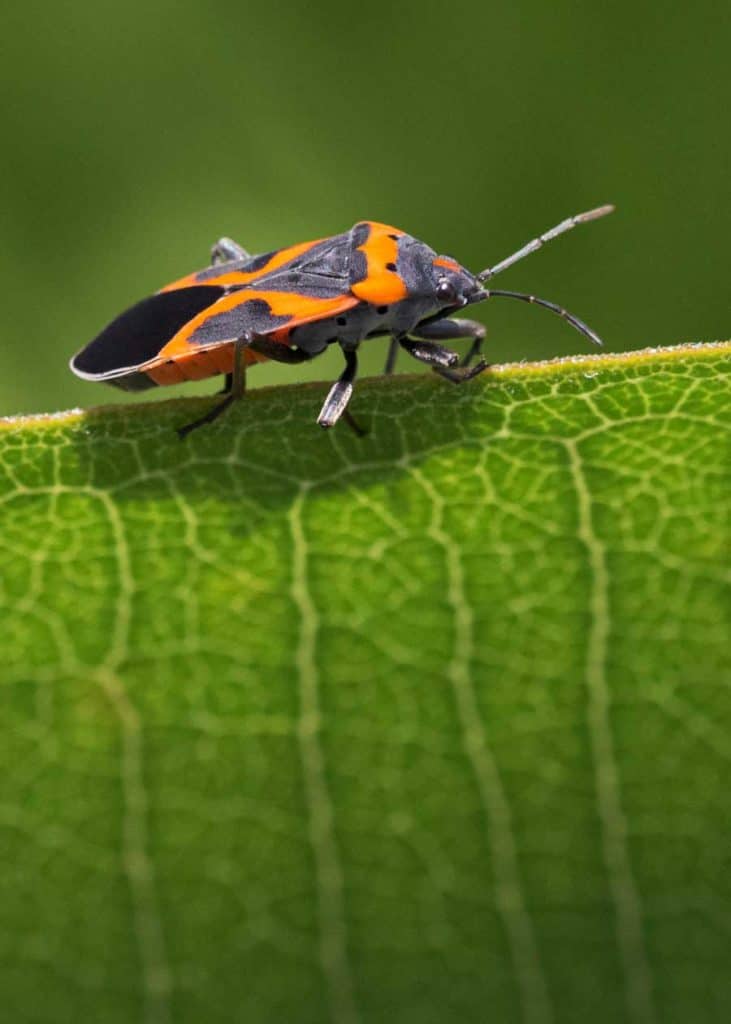
Your Turn
Have you found milkweed bugs in your garden? Which species do you have? How do you handle them in your butterfly garden?
- About the Author
- Latest Posts
Dena Haines is a founder and writer at My Monarch Guide. And is working to make it the best resource for raising and enjoying monarch butterflies.
She also blogs about travel at Storyteller.Travel and photography at Storyteller Tech. Dena is a partner at Storyteller Media, a publishing company she runs with her husband, Bryan.
